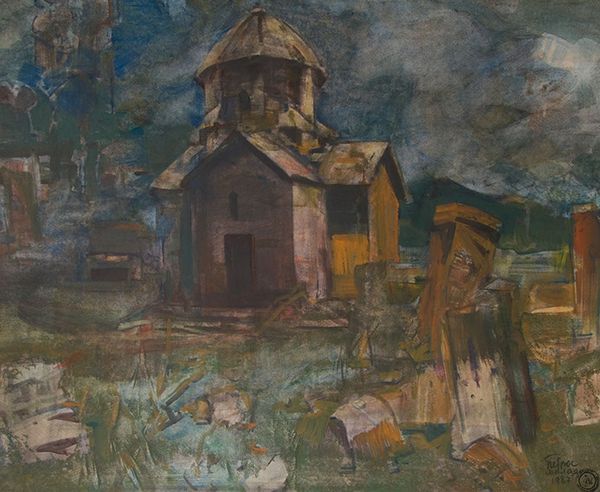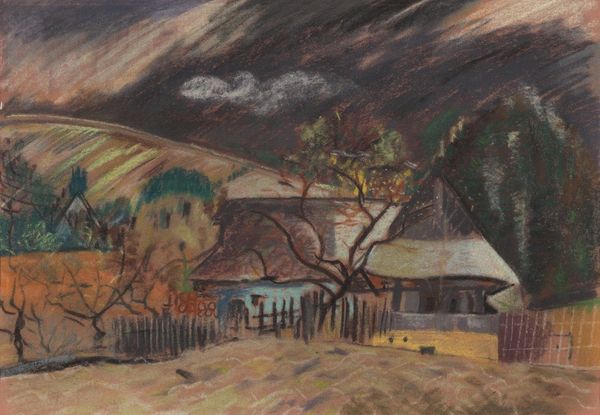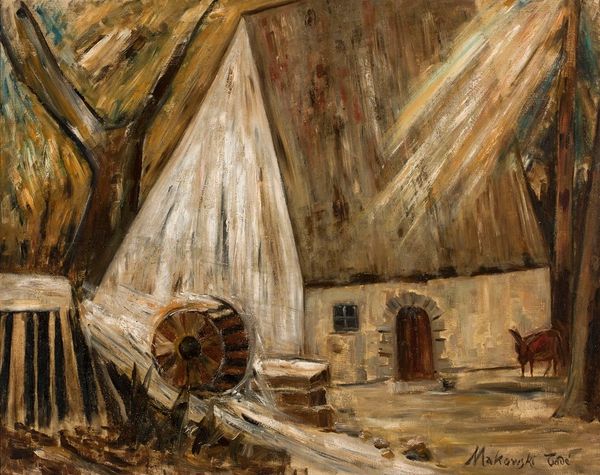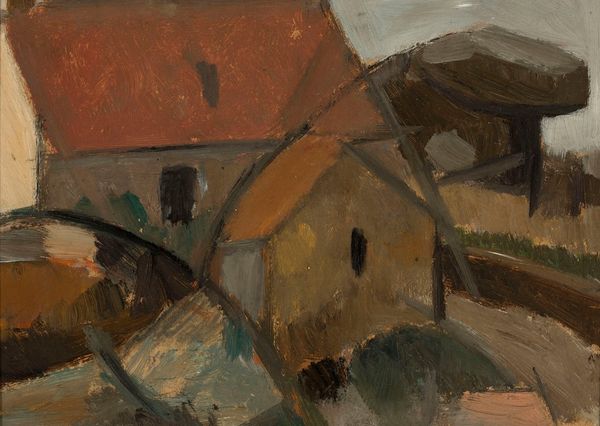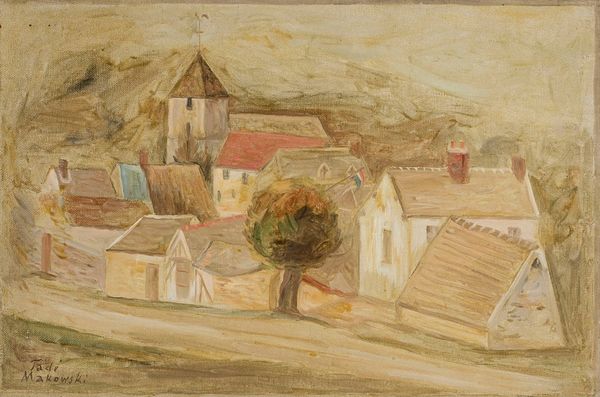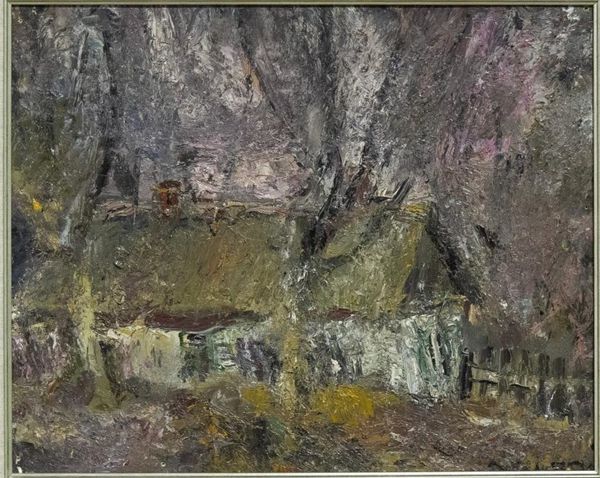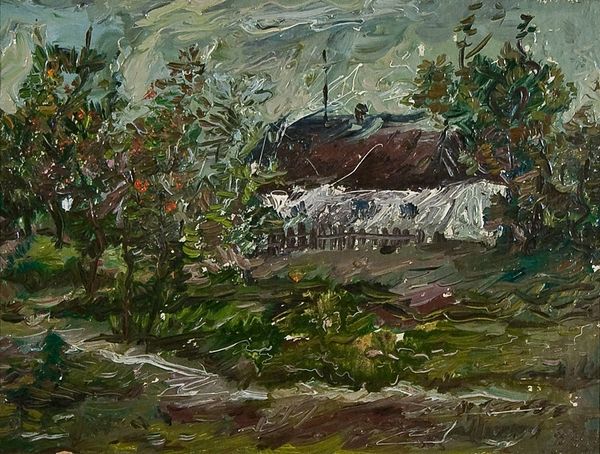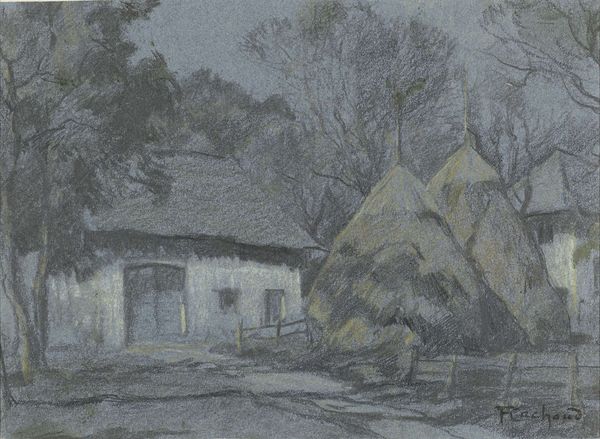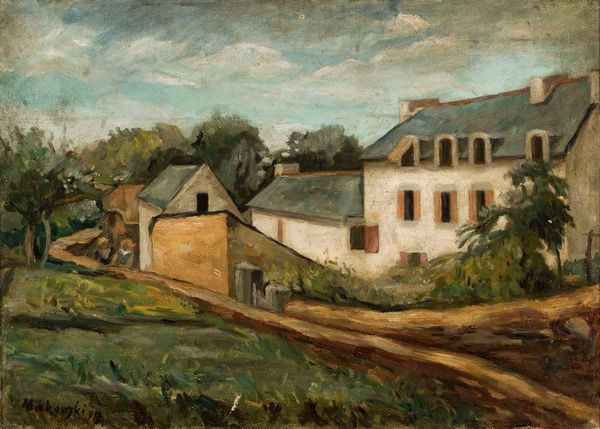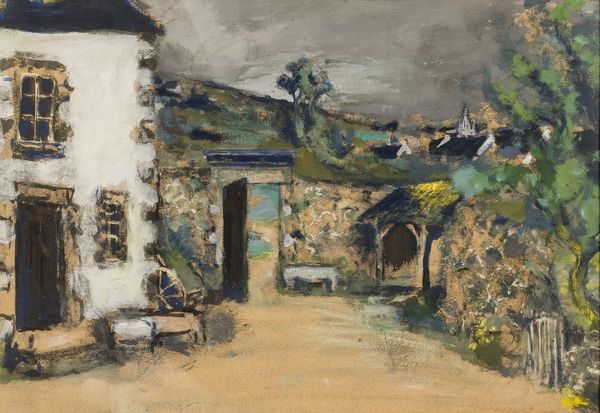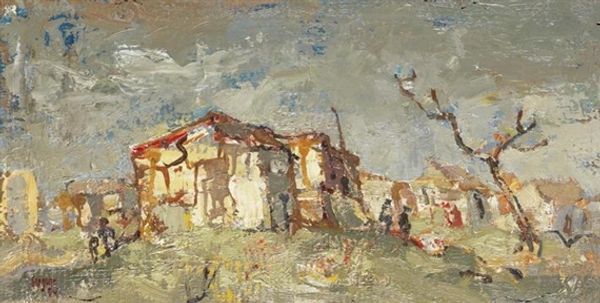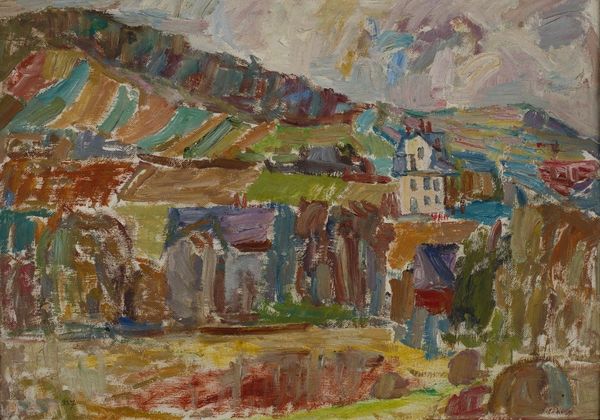
Dimensions: 45 cm (height) x 66.5 cm (width) (Netto)
Editor: This is Hans Knudsen’s “Forsamlingshuset i Slagslunde,” painted sometime between 1900 and 1944. It’s an oil painting on canvas, depicting a rural building. The colors are quite muted, creating a somewhat somber mood. What strikes you most about this piece? Curator: The symbolism here is subtle yet powerful. Observe the bare tree against the building. Trees often represent life cycles, wisdom, and growth. In contrast, buildings embody civilization, community, and structure. Here, the juxtaposition feels melancholic. The bareness of the tree suggests a potential vulnerability or stagnation within that community space, hinting perhaps at the quiet struggles of rural life during that era. What details support this potential vulnerability in your opinion? Editor: I guess the fading paint on the building and the slightly overgrown landscape around it? It doesn't feel particularly welcoming. Curator: Precisely! Knudsen is capturing more than just a visual likeness. He's conveying the emotional and psychological landscape of a place. The overgrowth can symbolize nature reclaiming what was once tamed, or a lack of vitality in the building's function. The brushstrokes themselves, thick and visible, contribute to this feeling of immediacy, like a fleeting impression caught in time. Editor: So you see the building itself as a symbol for something larger, like a community's identity? Curator: Absolutely. Consider also the period between 1900 and 1944 – two World Wars, immense social upheaval. Even in quiet rural settings, these events leave their mark, symbolized here by the weathering and, yes, perhaps even the slight abandonment suggested by the unkempt surroundings. Do you agree this symbolic weight makes this landscape genre painting also a kind of genre painting – that is a coded scene of everyday life? Editor: I hadn't considered that, but it does add a new layer to my understanding. Seeing the building not just as a place, but as a symbol of a community experiencing change. Curator: Indeed. And hopefully, that awareness will shape how you approach art – seeing beyond the surface to the rich tapestry of cultural memory woven into each work. Editor: Thanks! That's given me so much to consider in how art reflects not just what is seen, but what is felt and remembered.
Comments
No comments
Be the first to comment and join the conversation on the ultimate creative platform.
